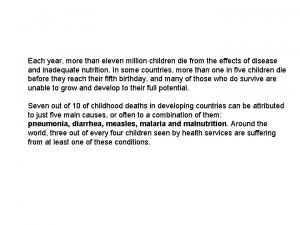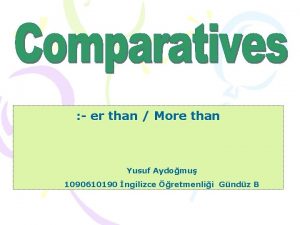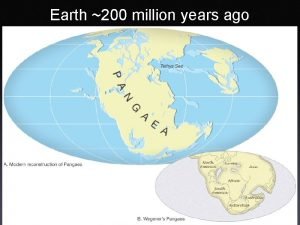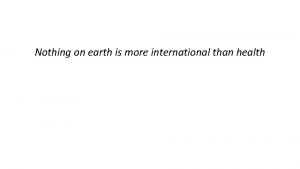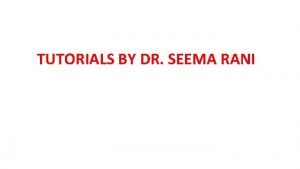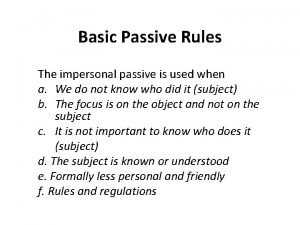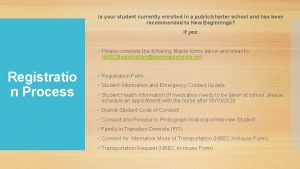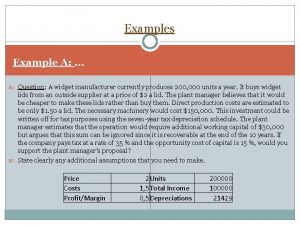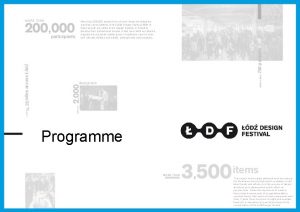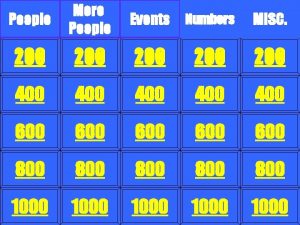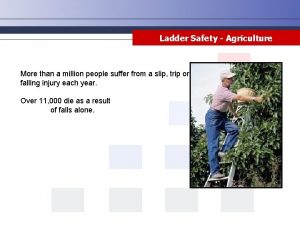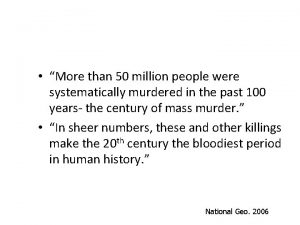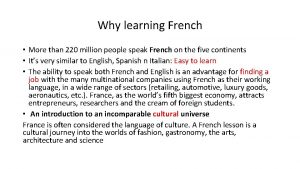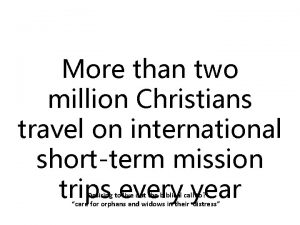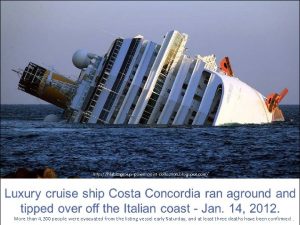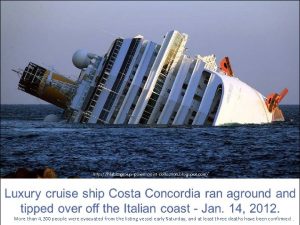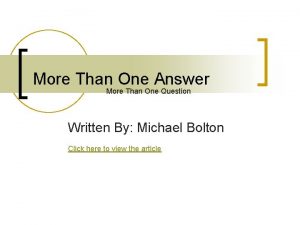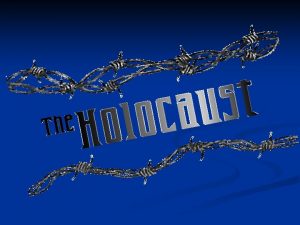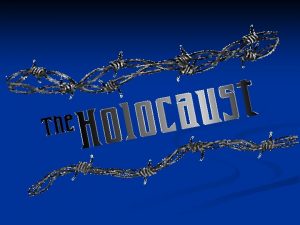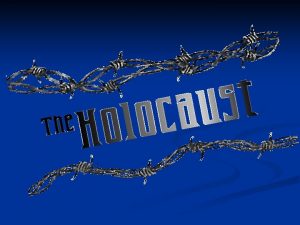INTERNATIONAL MIGRATION Currently more than 200 million people
























- Slides: 24

INTERNATIONAL MIGRATION

� Currently, more than 200 million people live in countries outside of their country of birth. � International migration shows no signs of slowing down, hence, understanding the causes, consequences, and effects of migration remains one of the most important and pervasive topics of the 21 st century in both scholarly and policymaking communities.

� Social, economic, political and demographic consequences of migrations in countries of both origin and destination. � Themes in sociological research include race, ethnicity, gender, transnational processes, social networks, development, political institutions and the state.

� Immigration is not a new phenomenon. It dates back to the early stages of written history. � Though migration is not new, it is accelerating as part of the process of global integration. � This is a reflection of the rapidly changing economic, political and cultural ties between countries.

THE AGE OF MIGRATION � Currently, more than 200 million people reside in a country other than where they were born. � That is equivalent to 3 per cent of the world’s population.

� Immigration: The movement of people into a country to settle. � Emigration: To leave a country to settle in another. � The two waves together produce global migration patterns that link countries of origin and countries of destination. � Immigration is now an important issue in many countries with significant social, cultural, economic and political repercussions.

MIGRATION AND THE UK Immigration to the British isles has existed throughout recorded history � Industrialization saw migration within the British Isles from the Celtic fringe and other rural areas to expanding urban centres � Migration from the near continent has occurred as groups have fled political and religious persecution � During the 1930 s and 40 s many fleeing Nazi expansion in mainland Europe fled to Britain �

� Rising immigration rates have challenged commonly held notions of national identity; � Also forced a re-examination of concepts of citizenship. � What might be some of the issues regarding the concept of citizenship? (definiton of citizenship, granting citizenship rights, dual citizenship)

MIGRATION AND THE UK � In Britain, Irish, black and Jewish communities had existed long before the Industrial Revolution. But the surge of new opportunities altered the scale and scope of international migration. � New waves of Dutch, Chinese, Irish and black immigrants transformed British society.

� Post-Second World War immigration primarily from Commonwealth nations to meet a need for unskilled workers � Immigration and asylum regulations tightened by successive governments since the 1960 s � New migration sees free movement of labour between member states of the European Union

� The spread of industrialization has also transformed migration patterns in industrializing countries. � The growth of employment opportunities in urban areas encouraged a trend towards rural-urban migration.

MODELS OF MIGRATION Classic Model (Australia, US, Canada) � Nations built from immigration; citizenship extended to migrants Colonial Model (Britain, France) � Favours immigrants from former colonies; builds on preestablished partial citizenship Guest Worker Model (Germany, Swiss) � Immigrants admitted on temporary basis; no citizenship rights Illegal Forms (Mexico-US border) (Undocumented or paperless) � Remaining beyond visa expiry/people smuggling

COLONIAL MODEL � Following WWII, people from Commonwealth countries were encouraged and facilitated to go to the UK, which had a shortage of labor. � In addition to rebuilding the country and economy after the destruction of the war, industrial expansion provided British workers with mobility, creating a need for labor in unskilled and manual positions.

� The British Nationality Act of 1948 granted favorable immigration rights to the citizens of Commonwealth countries. � With each wave of immigration, the religious composition of the UK changes. British cities became multiethnic and religiously diverse. � Immigration brought new questions about what it means to be British and how ethnic and religious minorities can fully integrate into British society.

ASYLUM-SEEKERS / REFUGEES � To be granted asylum, individuals must claim that being forced to leave the country would break obligations that the government has under the UN Convention and Protocol relating to the Status of Refugees, which obliges signatory nations to protect refugees who are fleeing persecution and treat them as well as other foreign nationals on their territory.

RECENT GLOBAL TRENDS IN MIGRATION Acceleration � Migration across borders in greater numbers Diversification � Most countries receive immigrants of different types Globalization � More countries involved as both senders and receivers Feminization � Global demand for domestic, care and sex workers

THEORIES OF MIGRATION � Initiation of migration Neoclassical macro and micro migration theories � New economics of migration � Dual labor market theory � World systems theory � Lee’s push-pull factors � � Perpetuation of migration Network theory � Institutional theory � Cumulative causation � Migration systems (world systems and all of the above) �

PUSH AND PULL FACTORS Push factors: encouraging migrants to leave home country � Political oppression � War � Famine � Poverty � Population pressure

PUSH AND PULL FACTORS Pull Factors: factors drawing migrants to host nation � Employment opportunities � Higher standards of living � Lower population density

� Pew Global Attitudes Project (2005) � Germany � 34% thought immigration from North Africa and Middle East was a “good thing” � 57% thought it was a “bad thing” � 66% disapproved of immigration from Eastern Europe

GLOBAL MIGRATION SYSTEMS Interaction of micro and macro issues: � Micro: resources, knowledge and understandings of migrant population � Macro: political situation, immigration laws and regulations, shifts in the international economy

DIASPORA � In his book Global Diasporas (1997), Cohen defines diaspora as “the dispersal of an ethnic population from an original homeland into foreign areas, often in a forced manner or under traumatic circumstances”.

TYPES OF DIASPORA � Victim diaspora � Labor diaspora � Trading diaspora � Imperial diaspora � Cultural diaspora

CHARACTERISTICS OF DIASPORA � Movement from homeland � Shared collective memory of homeland belif in the possibility of return � Ethnic identity sustained over time and distance � Sense of solidarity with other members of the group
 More more more i want more more more more we praise you
More more more i want more more more more we praise you More more more i want more more more more we praise you
More more more i want more more more more we praise you Sporogony
Sporogony 200+200+300
200+200+300 Er than more than
Er than more than Half life more than 2 less than 4
Half life more than 2 less than 4 Better than god
Better than god Earth 200 million years ago
Earth 200 million years ago Who functions
Who functions Paper has more patience people.' elucidate
Paper has more patience people.' elucidate Baby suggs sermon
Baby suggs sermon 67 million people
67 million people Impersonal passive
Impersonal passive 200+200+100+100
200+200+100+100 400+400+400+200
400+400+400+200 300+300+200+200
300+300+200+200 200+200+100
200+200+100 100 200 300
100 200 300 100 + 200 300
100 + 200 300 Immigration policies examples ap human geography
Immigration policies examples ap human geography Scapi status pin currently blocked
Scapi status pin currently blocked V root
V root Currently enrolled
Currently enrolled Torrent is currently in upload only mode
Torrent is currently in upload only mode A widget manufacturer currently produces
A widget manufacturer currently produces


